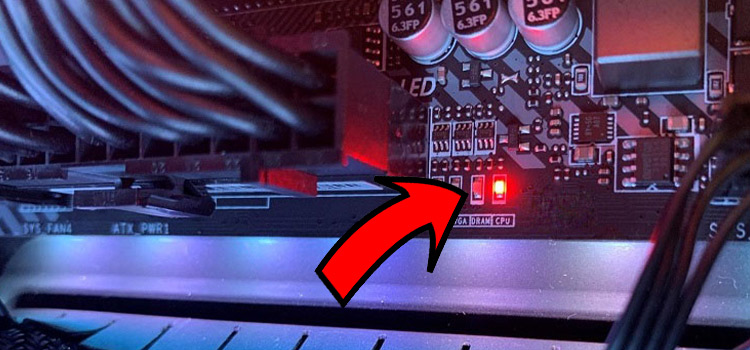How to Disable an Alarm System From Outside
Alarm systems play an integral part in our home security. However, sometimes disabling an alarm system might be necessary, especially when it is a false alarm or a malfunctioning unit.
So, we are going to explain in this article, how to disable an alarm system from the outside. It actually varies, depending on the type of alarm system you are using. Let’s begin.

How to Disable an Alarm System From Outside
There are some ways by which you can disable an alarm system from outside.
There are some ways by which you can disable an alarm system from outside. The following are some of the situations when you might need to disable an alarm from the outside.
- In any case, security alarms come with a keyboard beeping or blaring. These alarms also have some functions like light flashing and displaying an Alarm, Alarm Memory, and Trouble condition. If there is any siren, it will sound until the programmed time. Usually, the time duration is about 10 minutes.
- When the alarm also works as a smoke detector, it will display the keyboards beeping or show a troubled system. If the beeping noise does not come from the keyboard, it doesn’t mean the alarm is out of work.
- When the smoke alarm often beeps for a low backup battery, it won’t cause the keyboards to beep.
- The fire alarm sound is very hard to trace.
There are some methods by which you can disable an alarm system by outside. The methods are given below:
Method 1: Disable an Alarm by Powering it Off
The first thing you should look into, always, is to power it off, if possible. Do the following to power that annoying thing down.

Step 1: First, you have to find the activated unit. If it is a fire alarm, it will be indicated by a rapidly flashing red light on the front of the unit.
Step 2: Then, you have to reset the alarm. In modern technology, the alarms are battery powered and you can reset the alarm by just pressing the button for a few seconds on the alarm. If there is no button on the alarm, you have to unscrew the alarm.
Step 3: If you can’t reset the alarm, you have to replace the battery of the alarm. You have to unscrew the detector from the wall and replace the battery. If the alarm is defective, you have to replace the entire unit.
Method 2: Disable the Alarm with Circuit Breakers
If you cant power down your alarm by using the power switch, look for the circuit breaker and turn it off.

Step 1: First, you have to reset each alarm connected to the other. You have to reset the alarm by pressing or holding down the button on the front side of the device. You may need to unscrew the unit sometimes to reset it.
Step 2: If the resetting process doesn’t work, you have to flip the alarm. You have to flip the circuit breakers. If all your security alarms are routed to one breaker. Then, it will be easy for you and you have to just flip that one circuit. You may find the circuit breaker in your garage, basement, or maintenance closet.
Step 3: Finally, you have to disconnect each alarm. You have to disconnect all the alarms entirely. You just have to twist the alarm counter-clockwise to disable the alarm.
Method 3: Disable Alarms with Control Panel
Not all alarms come with a circuit breaker, in that case, consider disabling it via the control panel.

Step 1: First, you have to locate the control panel of the fire alarm. Typically, most buildings have a primary panel to control the alarms. You may find this panel in a breaker room or janitor’s closet.
Step 2: Then, you have to access the control panel. Sometimes, the control panel is secured with a protective box. In this situation, you have to first open the protective box with a key. Now, you have to access the control panel. Once you access the control panel, you need a verification code to control the panel. Sometimes, you can do this with a small control key.
Step 3: Finally, you have to follow the instructions to control or disable the alarm. Every alarm is technically indifferent to each other, so every alarm needs a different method to disable it. So, you have to disable the alarm manually. You can also press a silence or reset button the disable the alarm temporarily.
Method 4: Disable Alarms with AC Power
This method is intended for alarms that come with an AC power system, alarm systems with batteries for example.

Step 1: First, you have to disable the alarm by unplugging a low voltage transformer. This transformer can be a 3” cube-shaped module. You may also find the transformer plugged into a wall outlet or it can be found near the control unit.
Step 2: Then, you need a screw to removing the transformer.
Step 3: If you can’t find the transformer or you are unable to unscrew it, you can simply disconnect the wiring of the main panel.
Method 5: Disable Alarms with Enclosures
Disabling alarm systems that have metal or plastic enclosures can be a bit difficult to disable. Do the following to disable them.

Step 1: First, you have to separate the front face of the control unit from the base. You can apart the alarm easily by inserting a small screwdriver to release them.
Step 2: If you have an alarm system with a metal encloser, you have to open the lid. The alarm may be easily shut with the screw.
Step 3: If the alarm has a lock, you have to unlock it with a key. The alarm panel has normally a smaller key than the usual house key.
Step 4: If you can’t find the alarm key, you can drill out the lock with an electric drill. You can also replace the lock permanently and secure the lid with a screw.
Step 5: If you can’t unscrew it, you have to wait for the battery to run wait. It can take a while. You can tape a towel over the front of the keyboard to reduce the beeping sound.
Step 5: You can also disconnect power to disconnect the keyboard, sirens and other to silent.
Conclusion
Under normal circumstances, you should never disable your alarm system. However, if your alarm system goes off erratically when you are locked out of your house, the only way to turn it off or disable it is to cut down its power. Follow one of the above-mentioned methods to do so. Hope we have helped. Thanks.
Subscribe to our newsletter
& plug into
the world of technology





